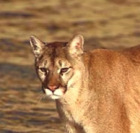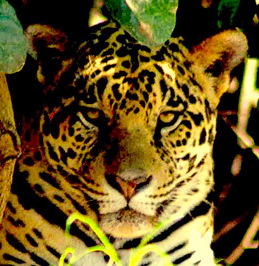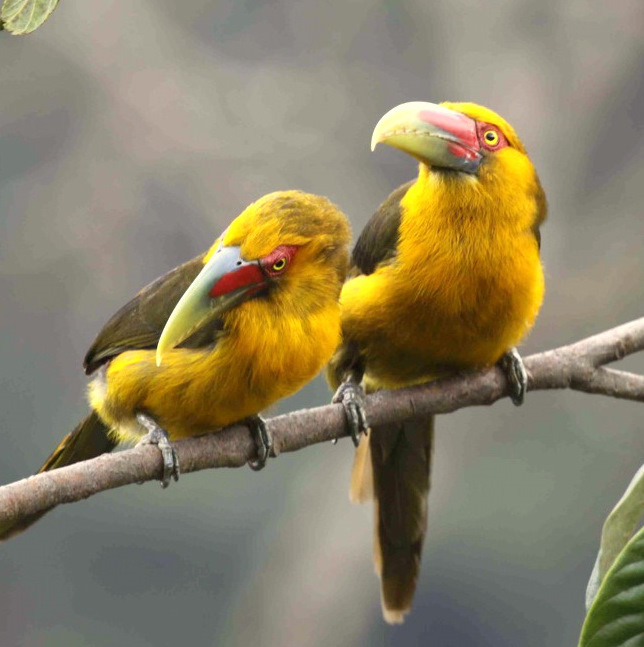AROUND LA PAZ: Titicaca Lake & Roads to the Lowland Rain Forests
La Paz at 11,929 feet is the highest capital in the world, yet 1,200 feet below the surrounding Andean Altiplano and city El Alto. The famous Mount Illimani towers over the city, which appears to sit in a crater. With its peak at over 21,000 feet, it is permanently covered with snow and glaciers. La Paz has a population of just less than two million. An impressive half of all residents are Incan or Aymar· descendants, speaking their native tongue. You will no doubt want to explore the Indian market, as well as a number of other stores selling items unique to the region.
The road to Coroico is surely one of the most impressive drives on Earth. Leaving La Paz you climb through the clouds to La Cumbre Pass at over 15,500 feet. Snowcapped peaks and snowfields surround you. Start down from here, dropping over 14,100 feet in less than 50 miles. Pass Paramo grasslands with bogs, Puna with Andean lakes, elfin forest with bamboo and cloud forest before arriving at the exuberant Yungas subtropical rainforest. The steepness of the region is the reason so much good habitat remains. You will want to stop in the different habitats on the way, and birding or botanizing the steep temperate and sub-tropical slopes will be exhilarating.
A number of birds occur in these habitats that are different from those on the Cochabamba/Vila Tunari road. Natural Puna gardens attract a variety of hummingbirds including the Andean Hillstar. This delightful jewel is well adapted to the high altitude with its abilities to go into a dormant torpor to save energy at night and on cold days.
Canyons on the way up to the pass host Black-billed Shrike-Tyrant and Short-tailed Finch. Near the pass one can find Andean Goose, White-fronted and other Ground-Tyrants, Gray-breasted and Rufous-bellied Seedsnipes and the rare and exquisite Diademed Sandpiper-Plover. Going down the other side, possibilities include Scaled Metaltail, Amethyst-throated Sunangel, Citrine Warbler, Streaked Tuftedcheek, Ochraceous-breasted Flycatcher, Chestnut-bellied Mountain-Tanager, the dazzling Golden-collared Tanager, Moustached Flower-piercer and a race of Light-crowned Spinetail with a white crest.
Further down the habitat becomes more sub-tropical, with huge bamboo stands intermixed with cloud forest. Several bamboo specialists forage here, including Sepia-brown Wren, Plushcap, Superciliaried, Three-striped, Orange-browed and Drab Hemispinguses.
Some of the forest species include Hooded Mountain-Toucan, Rust-and-Yellow, Blue-and-Black and Blue-capped Tanagers, Crimson-mantled and Bar-bellied Woodpeckers, Long-tailed Sylph, Sword-billed Hummingbird, Rufous-capped Thornbill, Rufous-bellied Brush-Tyrant and Southern Mountain Cacique. Continuing down look for Black-winged and Plum-crowned Parrots, Crested and Golden-headed Quetzals, Band-tailed and Barred Fruiteaters, Barred Becard, Crescent-chested Cotinga, Bolivian Tyrannulet, Andean and White-eared Solitaires, Golden-browed Chat-Tyrant, Mountain Wren, White-collared Jay and a dazzling array of tanagers. One can also find the highly localized Scribble-tailed Canestero.
The Zongo Valley, north of La Paz, is another birding option with great scenery. One drives between two of Bolivia's tallest peaks and past a series of lakes used to produce electricity. This road also dips down into lush forest, and an advantage during the wet months of October through May is that the road is wet, and thus no dust. With so many dirt roads, dust can be a problem all over the country in July, August and other dry months.
Lake Titicaca, to the west of La Paz, is the last stretch of an ancient inland sea that once covered over 38,600 square miles and included Lake Uru-Uru. It is the world's highest navigable lake, and stretches over 3,140 square miles. Its greatest known depth is 918 feet. Floating totora reeds enable descendants of the Uru Indians to maintain floating villages, and inhabitants of the south use them to build the distinctive reed boats for which the lake is known.
Thor Heyerdahl had artisans from Suriqui Island build both the 'Ra II' and 'Tigris' for his transoceanic expeditions. Boats are rarely made from the reeds anymore, except as museum pieces. Aluminum and fiberglass boats last much longer. In the marshy shorelines the endemic Short-winged Grebe lives among the totora reeds. One can also see Silvery Grebe, Plumbeous Rail, Andean Ruddy-Duck, Mourning and Peruvian Sierra-Finches, Black-winged Ground-Dove and Black Siskin.
You can continue along the northeastern shore of the lake to the ferry across the Tiquina Straights, and on to Copacabana. This attractive little town sits on a peninsula in Lake Titicaca at around 12,000 feet, just under 100 miles from La Paz. The city has several churches and the 16th century miracle working Dark Virgin of the Lake, the patron saint of Bolivia. Views of the lake are stunning. One can take a boat to Isla del Sol, an island a short distance from Copacabana. A sacred rock on the island is worshipped as the birthplace of Manco Huaca and Manco Kapac, the first Incas. Several ruins and temples are found on the island in the deep blue water of Lake Titicaca.
Another place of interest around Bolivia is the ruins of Tiwanaku on the south end of Lake Titicaca. Archaeologists believe Tiwanaku existed as early as 1600 BC as the ceremonial complex set in the center of an ancient empire that stretched over half of Bolivia, southern Peru, northern Chile and northwest Argentina. The ruins consist of four main structures.
A sunken temple's walls are lined with stone carvings of different faces. Three splendid monuments include the Puerto del Sol (Door to the Sun), and two monoliths. All have intricate carvings that are thought to be a calendar, with condor and puma faces, two left hands, a snake with a human face and other oddities. The largest building is the Acapana pyramid. This can be seen in just half a day from La Paz, and combines well with an afternoon trip to the lake.
La Paz and the surrounding areas of interest can easily fill four full days.









